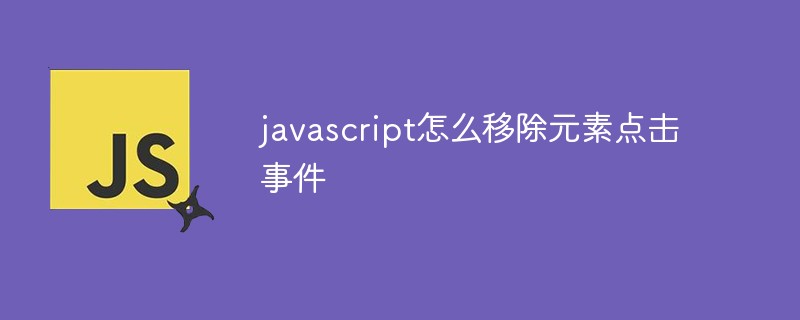 Web Front-end
Web Front-end JS Tutorial
JS Tutorial JavaScript Asynchronous Calling Framework (Part 3 - Code Implementation)_javascript skills
JavaScript Asynchronous Calling Framework (Part 3 - Code Implementation)_javascript skillsFirst, let’s set up a shelf and list all the variables that need to be used. We need an array to save the callback function list; we need a flag to indicate whether the asynchronous operation has been completed; we can also learn IAsyncResult and add a state to allow the implementer of the asynchronous operation to expose the custom execution status; finally add a Variables hold the results of asynchronous operations.
Async = {
Operation: {
var callbackQueue = [];
this.result = undefined;
this.state = "waiting";
this.completed = false;
}
}
addCallback method
Next, we have to implement the addCallback method. Its job responsibility is very simple, which is to put the callback function into the callbackQueue. In addition, if completed is true at this time, it means that the asynchronous operation has yielded, and this callback will be called immediately.
this.yield = function(callback) {
callbackQueue.push(callback);
if (this.completed) {
this.yield(this.result);
}
return this;
}
We assume that the yield method will take out the callback functions in the callbackQueue one by one and then call them. Therefore, if completed is true, just call yield again using the existing result, so that yield will naturally call the callback function added to the callbackQueue this time. callback function.
As for the final return this;, it is just to facilitate jQuery-style chain writing. Multiple callback functions can be added continuously by dot separation:
asyncOperation(argument)
.addCallback(firstCallback)
.addCallback(secondCallback);
yield method
Finally, we have to implement the yield method. It needs to take out the callback functions in the callbackQueue one by one, and then call them all again, and ensure that this operation is asynchronous.
this.yield = function(result) {
var self = this;
setTimeout(function() {
self.result = result;
self.state = "completed";
self.completed = true;
while (callbackQueue. length > 0) {
var callback = callbackQueue.shift();
callback(self.result);
}
}, 1);
return this;
}
By using setTimeout, we ensure that the actual operation of yield is asynchronous. Then we update the yield results and related status passed in by the user to the object properties, and finally traverse the callbackQueue to call all callback functions.
Summary
In this way, we have made a simple JavaScript asynchronous calling framework. The complete code can be seen here: Asynchronous calling framework Async.Operation.
This framework can well solve the problem of coexistence of synchronous and asynchronous operations in the call stack. Assuming that all functions return Async.Operation, users of the framework can use a unified mode to write code and handle function returns. There is no need to care whether this function actually returns synchronously or asynchronously.
For serial calls to multiple asynchronous functions, we can now write them in a nested addCallback manner, but as the number of nesting levels increases, the code will become more and more unsightly:
firstAsyncOperation().addCallback(function() {
secondAsyncOperation() .addCallback(function() {
thirdAsyncOperation().addCallback(function() {
finalSyncOperation();
});
});
});
Can we change the nested form to jQuery-style chain writing? This is the question we want to think about next, if you don’t want to miss the relevant discussion
 es6数组怎么去掉重复并且重新排序May 05, 2022 pm 07:08 PM
es6数组怎么去掉重复并且重新排序May 05, 2022 pm 07:08 PM去掉重复并排序的方法:1、使用“Array.from(new Set(arr))”或者“[…new Set(arr)]”语句,去掉数组中的重复元素,返回去重后的新数组;2、利用sort()对去重数组进行排序,语法“去重数组.sort()”。
 JavaScript的Symbol类型、隐藏属性及全局注册表详解Jun 02, 2022 am 11:50 AM
JavaScript的Symbol类型、隐藏属性及全局注册表详解Jun 02, 2022 am 11:50 AM本篇文章给大家带来了关于JavaScript的相关知识,其中主要介绍了关于Symbol类型、隐藏属性及全局注册表的相关问题,包括了Symbol类型的描述、Symbol不会隐式转字符串等问题,下面一起来看一下,希望对大家有帮助。
 原来利用纯CSS也能实现文字轮播与图片轮播!Jun 10, 2022 pm 01:00 PM
原来利用纯CSS也能实现文字轮播与图片轮播!Jun 10, 2022 pm 01:00 PM怎么制作文字轮播与图片轮播?大家第一想到的是不是利用js,其实利用纯CSS也能实现文字轮播与图片轮播,下面来看看实现方法,希望对大家有所帮助!
 JavaScript对象的构造函数和new操作符(实例详解)May 10, 2022 pm 06:16 PM
JavaScript对象的构造函数和new操作符(实例详解)May 10, 2022 pm 06:16 PM本篇文章给大家带来了关于JavaScript的相关知识,其中主要介绍了关于对象的构造函数和new操作符,构造函数是所有对象的成员方法中,最早被调用的那个,下面一起来看一下吧,希望对大家有帮助。
 JavaScript面向对象详细解析之属性描述符May 27, 2022 pm 05:29 PM
JavaScript面向对象详细解析之属性描述符May 27, 2022 pm 05:29 PM本篇文章给大家带来了关于JavaScript的相关知识,其中主要介绍了关于面向对象的相关问题,包括了属性描述符、数据描述符、存取描述符等等内容,下面一起来看一下,希望对大家有帮助。
 javascript怎么移除元素点击事件Apr 11, 2022 pm 04:51 PM
javascript怎么移除元素点击事件Apr 11, 2022 pm 04:51 PM方法:1、利用“点击元素对象.unbind("click");”方法,该方法可以移除被选元素的事件处理程序;2、利用“点击元素对象.off("click");”方法,该方法可以移除通过on()方法添加的事件处理程序。
 整理总结JavaScript常见的BOM操作Jun 01, 2022 am 11:43 AM
整理总结JavaScript常见的BOM操作Jun 01, 2022 am 11:43 AM本篇文章给大家带来了关于JavaScript的相关知识,其中主要介绍了关于BOM操作的相关问题,包括了window对象的常见事件、JavaScript执行机制等等相关内容,下面一起来看一下,希望对大家有帮助。
 foreach是es6里的吗May 05, 2022 pm 05:59 PM
foreach是es6里的吗May 05, 2022 pm 05:59 PMforeach不是es6的方法。foreach是es3中一个遍历数组的方法,可以调用数组的每个元素,并将元素传给回调函数进行处理,语法“array.forEach(function(当前元素,索引,数组){...})”;该方法不处理空数组。


Hot AI Tools

Undresser.AI Undress
AI-powered app for creating realistic nude photos

AI Clothes Remover
Online AI tool for removing clothes from photos.

Undress AI Tool
Undress images for free

Clothoff.io
AI clothes remover

AI Hentai Generator
Generate AI Hentai for free.

Hot Article

Hot Tools

PhpStorm Mac version
The latest (2018.2.1) professional PHP integrated development tool

MantisBT
Mantis is an easy-to-deploy web-based defect tracking tool designed to aid in product defect tracking. It requires PHP, MySQL and a web server. Check out our demo and hosting services.

SublimeText3 Linux new version
SublimeText3 Linux latest version

SecLists
SecLists is the ultimate security tester's companion. It is a collection of various types of lists that are frequently used during security assessments, all in one place. SecLists helps make security testing more efficient and productive by conveniently providing all the lists a security tester might need. List types include usernames, passwords, URLs, fuzzing payloads, sensitive data patterns, web shells, and more. The tester can simply pull this repository onto a new test machine and he will have access to every type of list he needs.

EditPlus Chinese cracked version
Small size, syntax highlighting, does not support code prompt function





